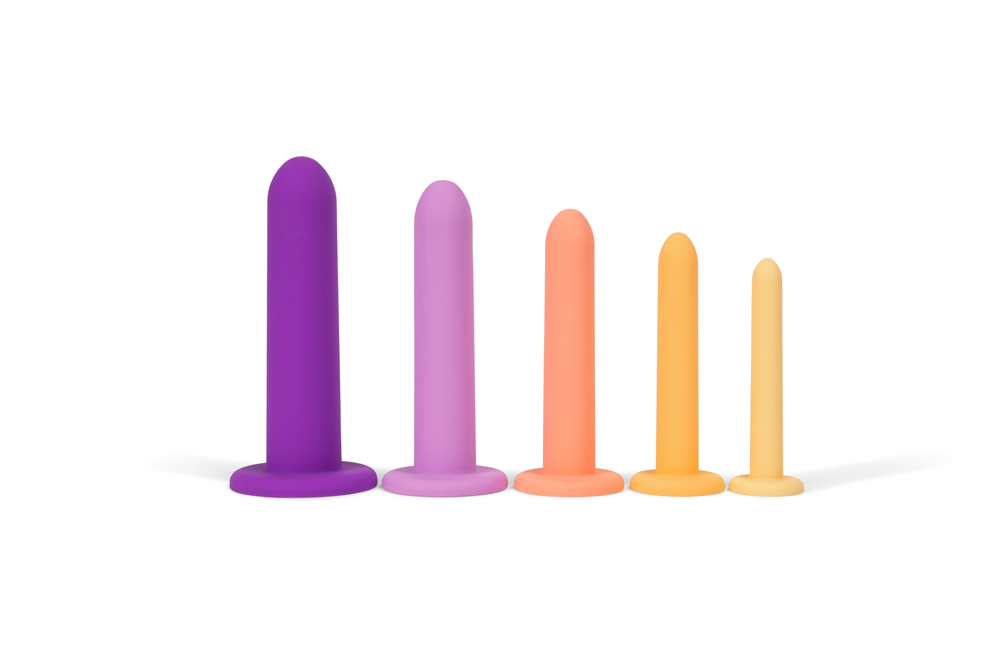Vulvodynia has undergone extensive review in the last 25 years. It has been categorized into two main groups; vulvar pain with an identifiable cause and vulvodynia, a chronic pain condition affecting the vulva without an identifiable cause. The discomfort can be constant or triggered by touch, making activities like sitting and sexual intercourse difficult. While the exact reasons for this condition remain uncertain, various treatment options are available to help individuals manage symptoms and improve their quality of life.
Understanding the Condition
Vulvodynia is a chronic pain disorder that affects the vulva, the external part of the female genitalia. Unlike infections or skin conditions, it has no visible cause, yet it can lead to burning, stinging, or irritation. The symptoms may be provoked or unprovoked and symptoms may appear immediately, or they may be delayed, making it a distressing condition for those who experience it.
The pain can be localized in a specific area or widespread across the vulva. Some individuals experience discomfort spontaneously, while others feel it in response to pressure, such as during sexual activity or tampon use. This variability makes it difficult to diagnose and often frustrates those seeking answers.
Many people with the condition struggle to find an effective treatment due to the complexity of the condition. A multidisciplinary approach is often required, including medical intervention, physical therapy, and lifestyle changes. Understanding its nature is the first step toward managing its impact.
Potential Causes
Although the exact cause of vulvodynia is unknown, researchers believe multiple factors contribute to its development. One potential explanation is nerve dysfunction, where the nerves in the vulvar region become hypersensitive, leading to pain without an external trigger. This heightened sensitivity can develop after infections, injuries, or medical procedures.
Hormonal fluctuations may also play a role in its development, particularly in individuals who have experienced significant changes due to pregnancy, menopause, or contraceptive use. A decrease in estrogen levels can affect tissue health, making the vulva more susceptible to irritation. This could explain why some individuals notice worsening symptoms at certain stages of their reproductive life.
Another possible factor is muscle tension in the pelvic floor, which can contribute to chronic pain in the vulvar region. When these muscles become tight or dysfunctional, they may exert pressure on surrounding nerves and tissues. Physical therapy with tools like a vibrating pelvic wand may help relieve tension and improve symptoms.
Common Symptoms and Their Impact
The primary symptom of vulvodynia is persistent vulvar pain that lasts for at least three months. This discomfort can manifest as burning, stinging, soreness, or throbbing sensations. The pain may be generalized across the vulva or localized to specific areas, such as the vaginal opening.
For some individuals, the pain is provoked by touch or pressure, making sexual intercourse, tampon use, wearing certain clothes, and even prolonged sitting uncomfortable. Others experience spontaneous pain with no identifiable trigger, which can make daily life unpredictable. The severity of symptoms varies, with some people experiencing mild irritation and others dealing with debilitating pain.
The emotional and psychological toll of the condition is significant, as chronic pain can affect self-esteem, relationships, and overall well-being. Individuals may feel isolated due to the intimate nature of the condition, making it difficult to discuss with the healthcare team or loved ones. Addressing physical and emotional aspects is essential in developing a comprehensive management plan.
Diagnosis and Challenges in Identifying the Condition
Diagnosing vulvodynia can be complicated due to the overall lack of awareness and understanding among many healthcare providers along with the absence of visible signs or definitive tests. Healthcare specialists typically rely on patient history and symptom descriptions to assess the condition. A cotton swab test may be used to identify areas of tenderness, helping to determine the severity and location of pain.
Since other medical conditions can cause similar symptoms, additional tests may be conducted to rule out infections, skin disorders, or neurological issues. This process can take time, leading to frustration for those seeking relief. Misdiagnosis is common, which can delay appropriate treatment and contribute to prolonged suffering.
The lack of awareness and research on the condition further complicates diagnosis, as some healthcare professionals may not recognize it as a legitimate condition. Advocacy and education are key in improving recognition and treatment options for those affected. Patients are encouraged to seek medical opinions from specialists familiar with chronic pelvic pain.
Treatment Options for Managing Symptoms
There is no single treatment for vulvodynia, but various options can help manage symptoms. Medications such as nerve pain relievers, topical anesthetics, and antidepressants may be prescribed to reduce discomfort. These treatments aim to alter nerve function and decrease pain signals sent to the brain. For those presenting with vestibulodynia, a type of vulvodynia that appears to be hormonally mediated, may benefit from the use of a topical hormone cream including estradiol and/or testosterone. These individuals may have developed their symptoms because they have a history of using medications, such as oral contraceptives or other medications that can alter hormones; or individuals at various stages of their life, breastfeeding and menopausal changes.Pelvic floor physical therapy is another practical approach, particularly for individuals with muscle tension that contributes to their symptoms. Therapists may use techniques to relax the muscles, improve blood flow, and reduce pain. In some cases, dilators can be incorporated into therapy to gradually enhance tissue flexibility and reduce sensitivity.
Lifestyle changes can also make a difference. These include avoiding irritants like scented hygiene products and wearing breathable clothing. Stress management techniques like mindfulness and relaxation exercises can also help minimize flare-ups. Since the effects of vulvodynia are variable for each person, combining treatments is often necessary to achieve relief.
The Role of Physical Therapy in Pain Management
Physical therapy plays a vital role in addressing pelvic floor dysfunction associated with vulvodynia. A specialist can assess muscle tightness and recommend exercises to improve flexibility and relaxation. Muscles that are too tight can become painful and when muscles are less tense, the pressure on nerves decreases, which can reduce pain over time.
One of the tools used in conjunction with physical therapy is a pelvic wand, which helps target deep muscle tension. This device allows individuals to perform gentle internal massage, breaking up trigger points and improving circulation in the affected area. Regular use under professional guidance can lead to significant symptom relief.
A vibrating pelvic wand offers an additional benefit, using gentle vibration to relax muscles more effectively. This added stimulation can enhance blood flow and promote healing, making it a valuable tool for individuals struggling with persistent pain. Consistency in physical therapy and at-home exercises is key to long-term improvement.
Addressing Emotional and Psychological Effects
Living with vulvodynia can be emotionally challenging, as chronic pain affects mental health and overall well-being. Many individuals experience feelings of frustration, sadness, or anxiety due to the unpredictable nature of their symptoms. The inability to engage in certain activities, including intimacy, can also impact self-esteem and relationships.
Seeking support from a therapist or counselor can be beneficial in coping with these emotional challenges. Cognitive-behavioral therapy is often recommended to help individuals develop strategies for managing pain-related stress and improving their quality of life. Support groups can also offer reassurance by connecting individuals who share similar experiences.
Open communication with partners, family, and the healthcare team is vital in navigating its impact. A strong support system can ease feelings of isolation and empower individuals to seek the care they need. Addressing the condition's physical and psychological aspects leads to a more comprehensive approach to healing.
How Diet and Lifestyle Can Influence Symptoms
How a person eats and lives can affect how their body responds to pain, including vulvodynia. Certain foods may trigger inflammation, which can make symptoms worse. Processed foods, excessive sugar, and caffeine have been linked to nerve sensitivity, so some individuals find relief by adjusting their diet.
Hydration and balanced nutrition play a role in overall tissue health. Drinking enough water and consuming foods rich in vitamins and minerals can support the body's natural healing processes. Some people notice improvements after consuming anti-inflammatory foods like leafy greens, berries, and omega-3 fatty acids.
Daily habits such as prolonged sitting or tight clothing can also contribute to discomfort. Choosing loose, breathable fabrics and taking breaks to move around may help reduce irritation. Minor lifestyle adjustments can make a big difference in managing symptoms over time.
The Importance of Finding the Right Healthcare Team
Seeking medical help for vulvodynia can be frustrating, especially when the condition is not well understood by all healthcare experts. Finding a specialist who has experience with chronic pelvic pain is an important step. A knowledgeable team of experts can recommend treatments that address the physical and emotional aspects of having the condition.
Many individuals benefit from working with a team that includes a gynecologist, pelvic floor therapist, mental health therapist, and pain management specialist. Each professional can offer a different perspective and approach, leading to more effective symptom management. A collaborative approach often results in better long-term outcomes.
Trust and communication are key when discussing symptoms and treatment goals. Patients should feel comfortable asking questions and voicing concerns about their care. A supportive healthcare team can make a significant difference in improving both physical comfort and overall well-being.
Improving Comfort and Quality of Life
Managing vulvodynia requires a personalized approach considering each individual's symptoms and lifestyle. Combining medical treatments, physical therapy, and self-care strategies can help reduce discomfort and improve daily function. While some people may find relief through medication, others benefit more from muscle relaxation techniques or alternative therapies.
For individuals looking for additional tools to support their recovery, our special dilators from NewFlora offer a gentle and effective way to improve flexibility and reduce discomfort. Taking steps toward pelvic health should be empowering; with proper support, individuals can regain comfort and confidence.





